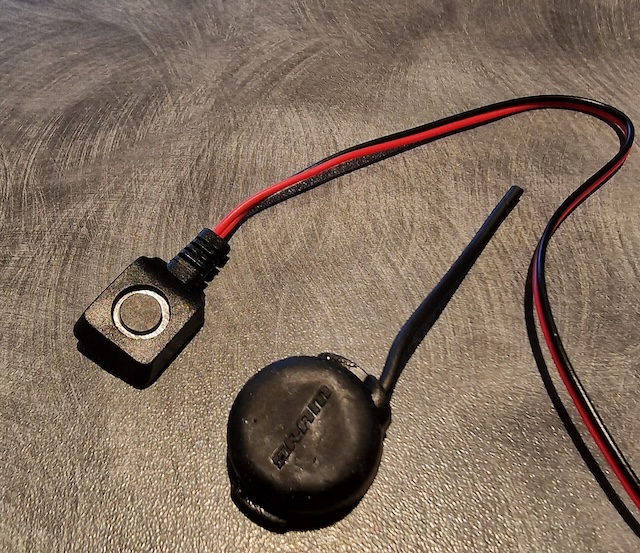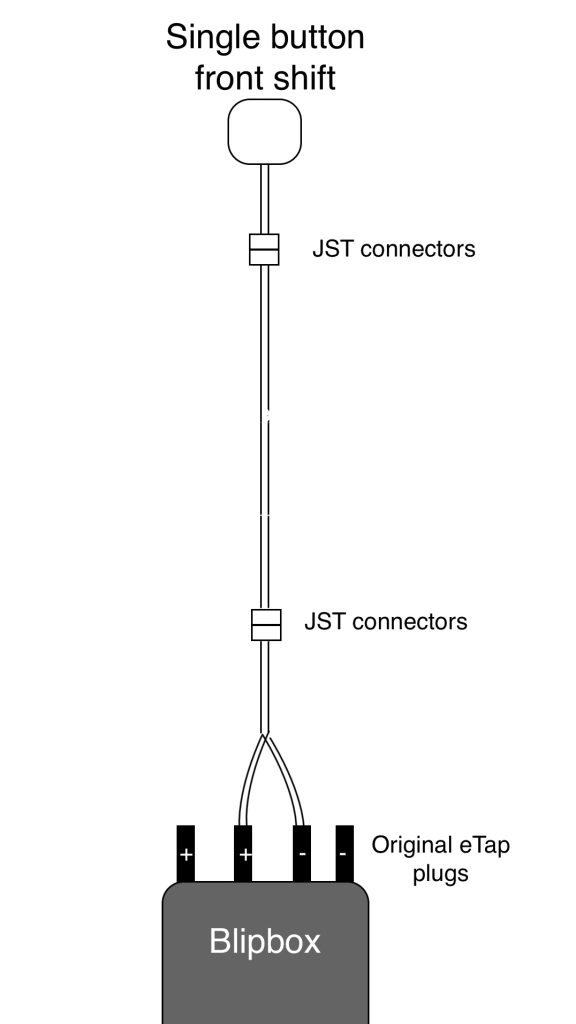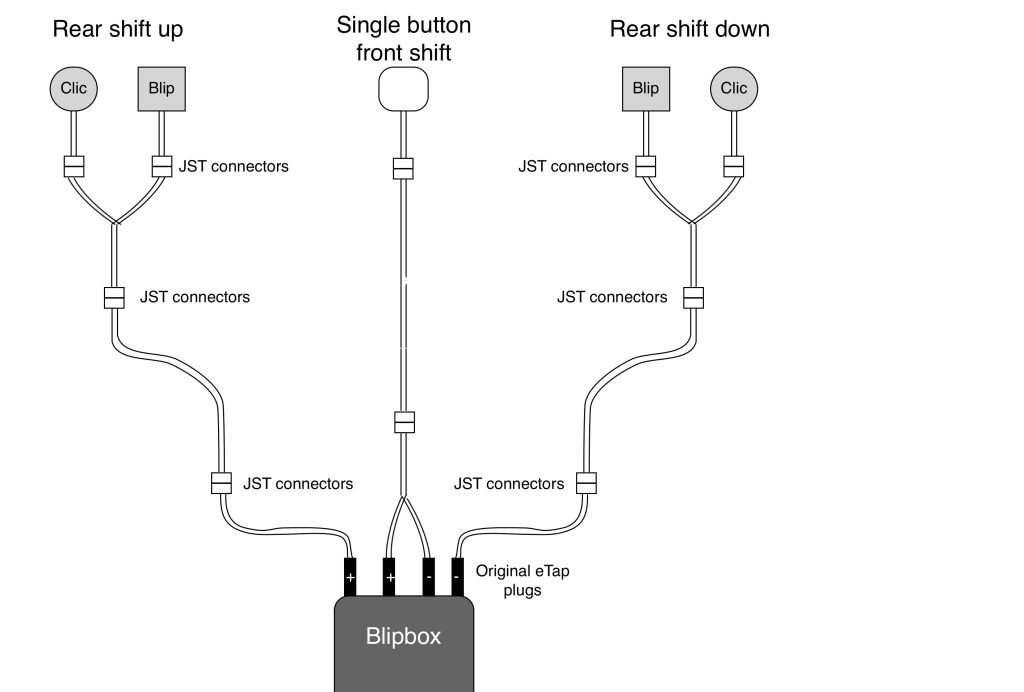
SRAM eTap wiring (being the second part of remodelling the Cervelo P3C)
In which I test (and implement) some alternative wiring possibilities for SRAM eTap gear shifters
The SRAM eTap Aero groupset was released in 2015 with a version aimed at road bikes where the gear change controls were switches in the brake levers, and which communicated with the front and rear derailleurs via a proprietary wireless signal. For time trial bikes, the eTap aero was released, where switches mounted on the aero bars were wired to a "blipbox", which wirelessly relayed commands to the gear mechs. Typically, one would set up a pair of switches (the "blips") on the base bar and a second pair of switches (the "clics") on the ends of the aero extensions. The blipbox has four sockets, two for upshift and two for downshift - each clic or blip switch is connected via one socket. The blipbox also has some buttons for shifting. The annoyance there is that the size of the blipbox makes it difficult to tuck it away in the time trial frame.
When I was rewiring my Cervelo P5-Six to house the eTap blipbox in the compartment near the bottom bracket, I had a bit of a play with the wiring of the switches. It seemed pretty clear that the switches themselves were just plain momentary switches, albeit constructed to be waterproof. The plugs and sockets that connect the switch cables to the blipbox appear to be proprietary, as I (and others) have been unable to find them for sale online (if they are available, please let me know!).
In setting up the wiring through the P5 frame, I wanted to minimise the amount of cabling, so I adopted the wiring below.

In this arrangement, I decided to have the routing separated by connectors to make the setup quite adaptable to future changes. As I expected, a clic and a blip connected to a single plug to one of the blipbox inputs worked just fine - either switch would signal a gear change either up or down depending on which port they were connected to.
While modifying the aerobar on my Cervelo P3C, I was aware that one of the blips was malfunctioning and only worked occasionally. That was problematic when trying to do a front shift, which requires simultaneous switching of both the up and down shifters, so it really needed repair or replacement. I also broke one of the clics while extracting it from one of the aero extensions.
Replacement blips have an RRP of £97 for a pair, and the clics are £129.48 (also for a pair) at Amazon. Quite a phenomenal price for plugs wires and switches.
So I investigated alternative switches and found the following at the Raspberry Pi component store Pi-Hut:
- A push button momentary switch to replace the clic. This works well, though it is 16mm in diameter, so needs a little packing with tape for a snug fit in the end of the aerobar. I don't think this is waterproof, so I covered it with nitrile from a glove and some self-welding silicone tape.
- A self-adhesive push button momentary switch to replace the blip. This actually is easier to fit as it has a lower profile that the blips, and the push button is recessed so it's easier to tape over. When taping over this switch, I put a couple of winds of the self-welding silicone tape over the switch before fitting the bar tape. The photo below shows the original blip alongside the replacement.

Both these switches work fine. I was also wondering whether one could link one switch to two inputs on the blipbox (one upshift port and one downshift port) for a single button front shift function. When I tried this, it worked very well, and could be something to try if front shifts become difficult due to a flaky switch. This wiring scheme is shown below.

So in fact one wiring arrangement for the blipbox could be as follows. All of these switches are momentary switches which make a connection when pressed (holding the button down causes multiple shifts).

So I completed the rebuild of the Cervelo P3C by moving to longer extensions, which required extending the clic wires to reach the blipbox, and replacing a clic and a blip with alternatively sourced switches (I'd have been over £200 out of pocket if I'd used the SRAM product).
Time will tell how durable the P5-Six and P3C wiring will be - on the basis of a few end of season club events, the P5-Six seems fine. The real test will be racing in heavy rain.
The above wiring description pertains to the original eTap 11-speed system. This has been replaced by the 12-speed AXS system. I expect that the blips and clics used for AXS are also dumb momentary switches since AFAIK the same switches are used in both 11-speed and AXS systems. I don't know that for certain.
When you subscribe to the blog, we will send you an e-mail when there are new updates on the site so you wouldn't miss them.
Comments